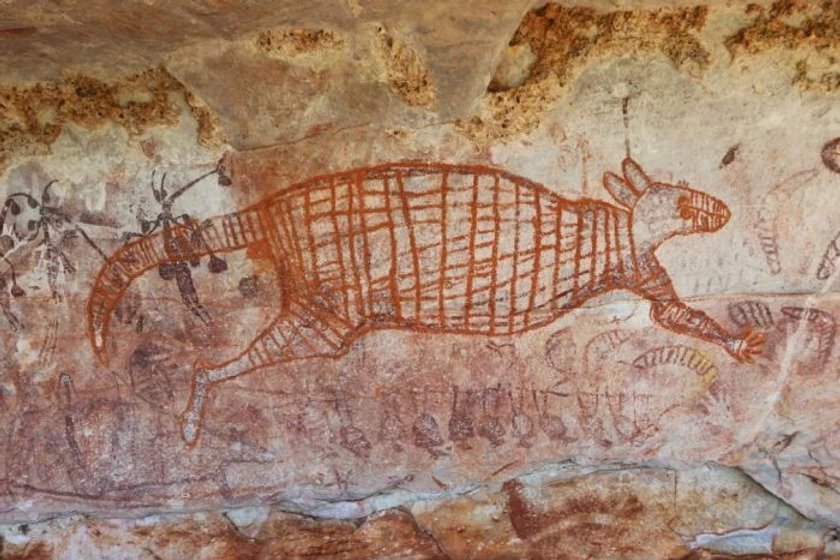Aboriginal Artwork In The Kimberley Could Be Among Oldest In The World, Scientists Say
Archaeologists and Aboriginal elders are hoping the most comprehensive study of rock art in the Kimberley region will confirm the images are among the oldest made by humans anywhere in the world. More than a dozen scientists took part in two field trips to study remote faces in Dambimangari and Balanggarra country.

They used pioneering techniques to collect and analyse hundreds of samples to narrow down the timeframes in which the striking images of people, animals and shells were made. Professor Peter Veth, from the University of Western Australia, said they were expecting to have the first results through by the end of the year.
“We expect some of those dates to be old, and some of them will be extremely old,” he said.
“We believe that this art will be as old, if not older, than that art in Europe, and that will make the Kimberley and all of its art, with its living, cultural connections, of world significance.”
Establishing firm dates for rock art is notoriously difficult, but dates of around 40,000 years have been recorded for images in Indonesia and Spain. In Australia, dating has been relatively limited, but dates of between 13,000 to 15,000 years old have been recorded in Queensland and up to 28,000 years in Arnhem Land in the Northern Territory.
Given that Aboriginal people are believed to have arrived in northern Australia up to 50,000 years ago, Professor Veth said there was potential for older dates to emerge. Professor Veth said the Kimberley region had one of the most diverse and abundant collections of Indigenous rock art in Australia.

“There are probably no reliable dates for the Kimberley, and yet here is one of the largest rock art galleries in the world, and probably the earliest concentration of figurative art anywhere in the world,” he said.
“We’re literally on the cusp now of dating it properly now, with all these different techniques, for the first time, so it’s incredibly exciting … it’s a bit of a cyclonic event.
“I think there will be surprises, things we totally don’t expect.”
The team used several different dating techniques on each painting to come up with the most reliable set of dates possible.
Their focus was on analysing the tiny samples of material taken from both under and on top of the painting, to narrow down the period in which it was created. It was a painstaking process for scientists like Helen Green, from the University of Melbourne.
The geologist pioneered a technique to date tiny crusts of dirt that form over an image in the hundreds, or thousands of years since it was created.

“We can see where a crust has formed over the squiggles of pigment, so we can use a small chisel to chip off a little piece,” she said.
“It will let us know that the art underneath that is older than the age that we get for that crust.”
She said she was now in lockdown at the university’s laboratories processing hundreds of tiny samples.
“You’re just really eager once you’ve collected all the samples to get in the lab and get the results, so yes it’s a really exciting time for us,” Ms Green said.
Watching closely are the Dambimangari and Balanggarra people.
Members of their ranger groups accompanied the researchers on their field trips to learn more about their sacred sites and ensure they were not damaged.
For young Balanggarra ranger Scott Unhango, the field trip was the first opportunity he had to visit rock art sites he had heard about in stories.
“I find it … interesting,” he said. “The powerful men, the great leaders, put these paintings on these walls and rocks.”
“When you come out here, you can sit down and listen and learn from our people and others, throughout the Kimberley … listen [to] what they got to tell you, and how important the stories are and the land and the people.”
For many elders, pinpointing creation dates for their art is of little concern. Elders like Balanggarra man Augustine Unhango have their own deeply felt understanding of how and when the images were made. But he said he recognised the value in documenting the rock art sites for posterity.
“It’s good to be teaching our kids as they’re growing up about the sacred places and the rock art, and to keep track of our sacred sites.”
